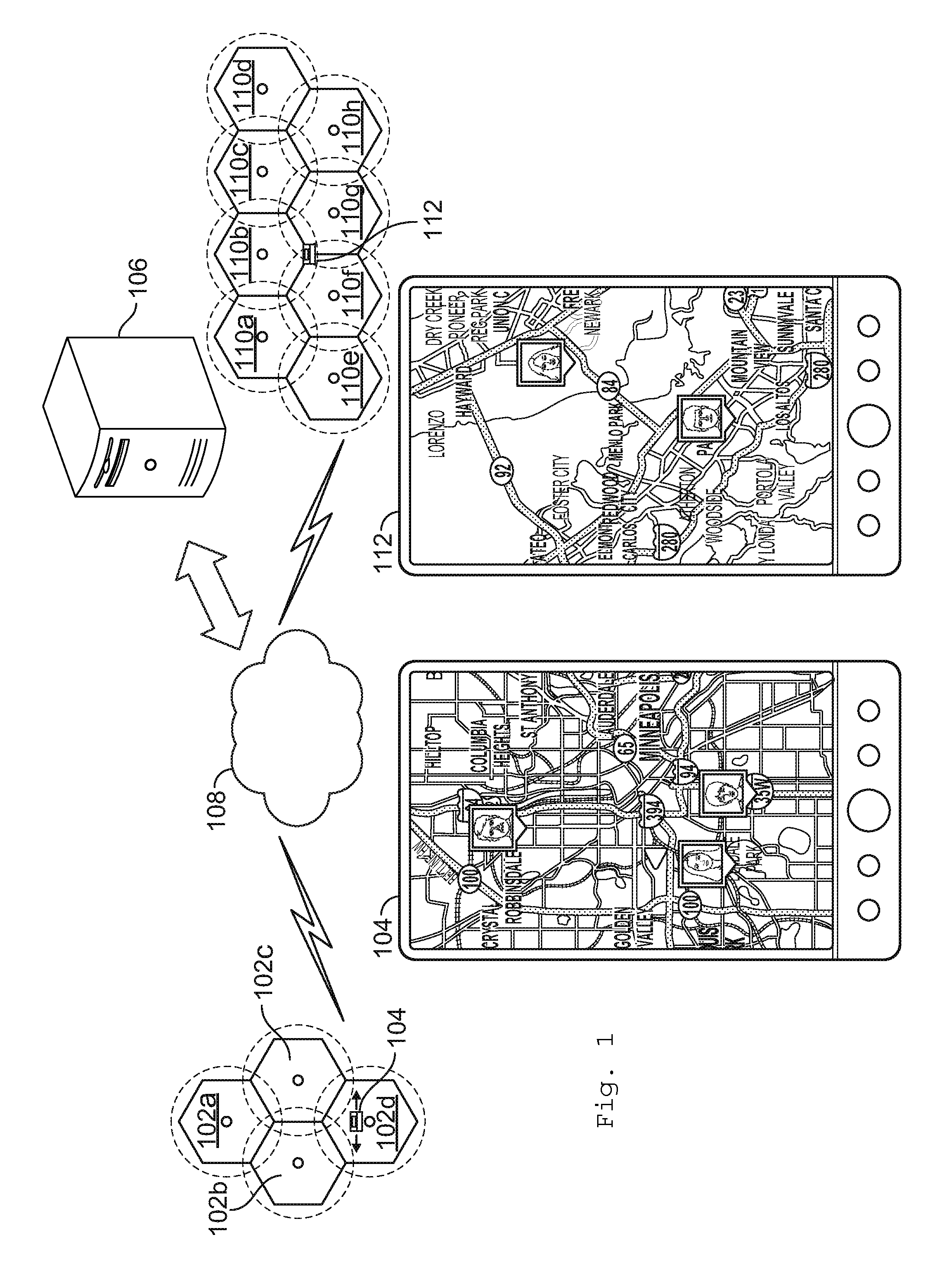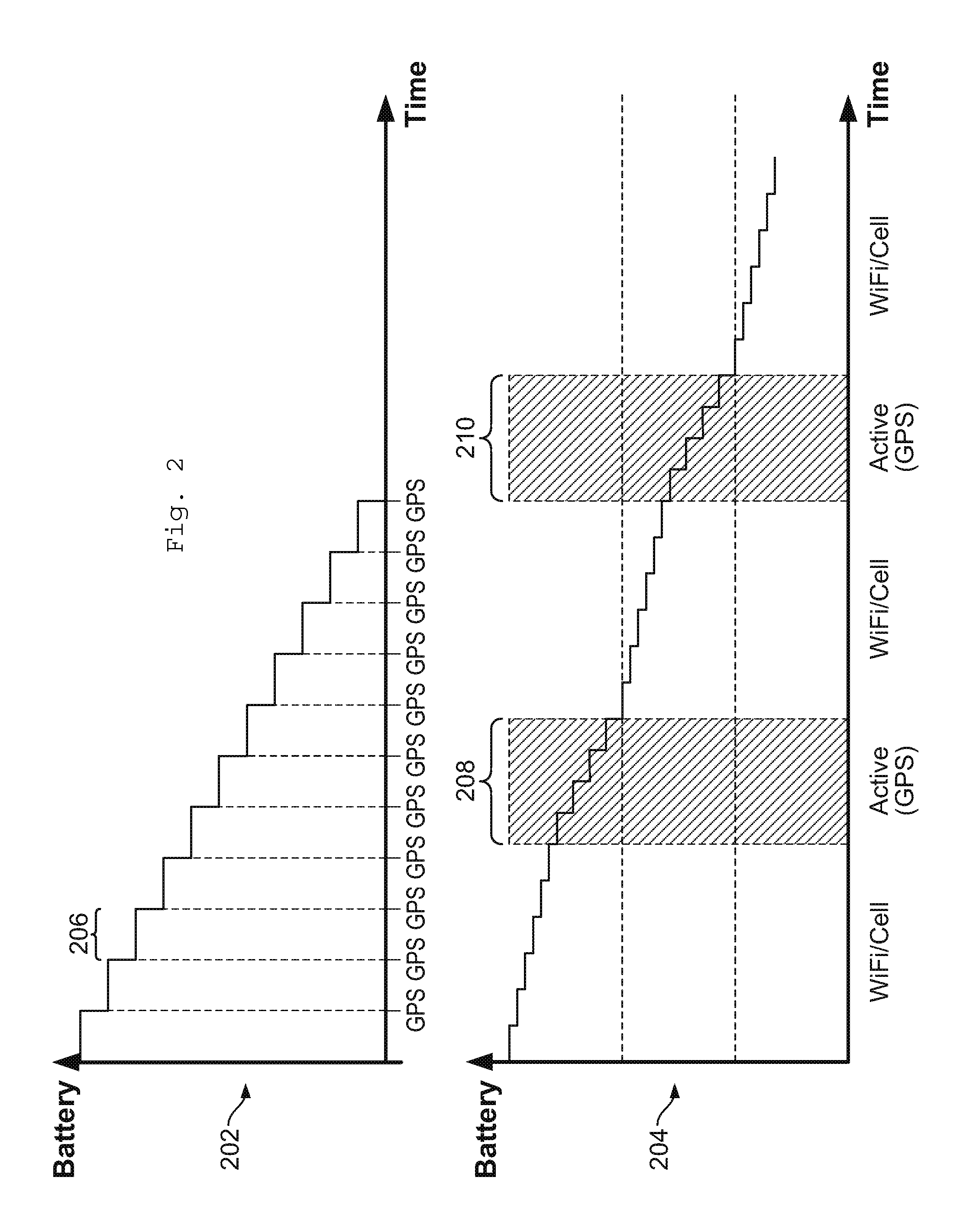Mobile Device Battery Management
a mobile device and battery management technology, applied in power management, high-level techniques, instruments, etc., can solve the problems of substantially reducing the observed battery life of users of such devices, high cost of location-based services (lbs), and reducing the observed battery life of users, so as to improve the user experience on such a device, the effect of increasing the battery life of the device, and collecting more in subscription revenue or in advertising revenu
- Summary
- Abstract
- Description
- Claims
- Application Information
AI Technical Summary
Benefits of technology
Problems solved by technology
Method used
Image
Examples
Embodiment Construction
[0025]This document describes systems and techniques for managing the use of location identifiers on a computing device so as to increase battery life on the device. Such techniques may include setting a particular period at which a device will check its location based on whether the device is determined to be moving or stationary. (In this context, the concepts of moving and stationary are not absolute, but depend on whether the motion is sufficient to warrant recognition that a device has changed status. For example, from a location-based system level, motion of a few feet is irrelevant because the device has not moved enough to support reporting a new location to other users.) Updates to the device's location may be made frequently when the device is moving, because prior reported locations will quickly be far from the user's current location, and will thus become functionally stale quickly. Updates may be made less frequently when the device is stationary, such as determined by ...
PUM
 Login to View More
Login to View More Abstract
Description
Claims
Application Information
 Login to View More
Login to View More - R&D
- Intellectual Property
- Life Sciences
- Materials
- Tech Scout
- Unparalleled Data Quality
- Higher Quality Content
- 60% Fewer Hallucinations
Browse by: Latest US Patents, China's latest patents, Technical Efficacy Thesaurus, Application Domain, Technology Topic, Popular Technical Reports.
© 2025 PatSnap. All rights reserved.Legal|Privacy policy|Modern Slavery Act Transparency Statement|Sitemap|About US| Contact US: help@patsnap.com



